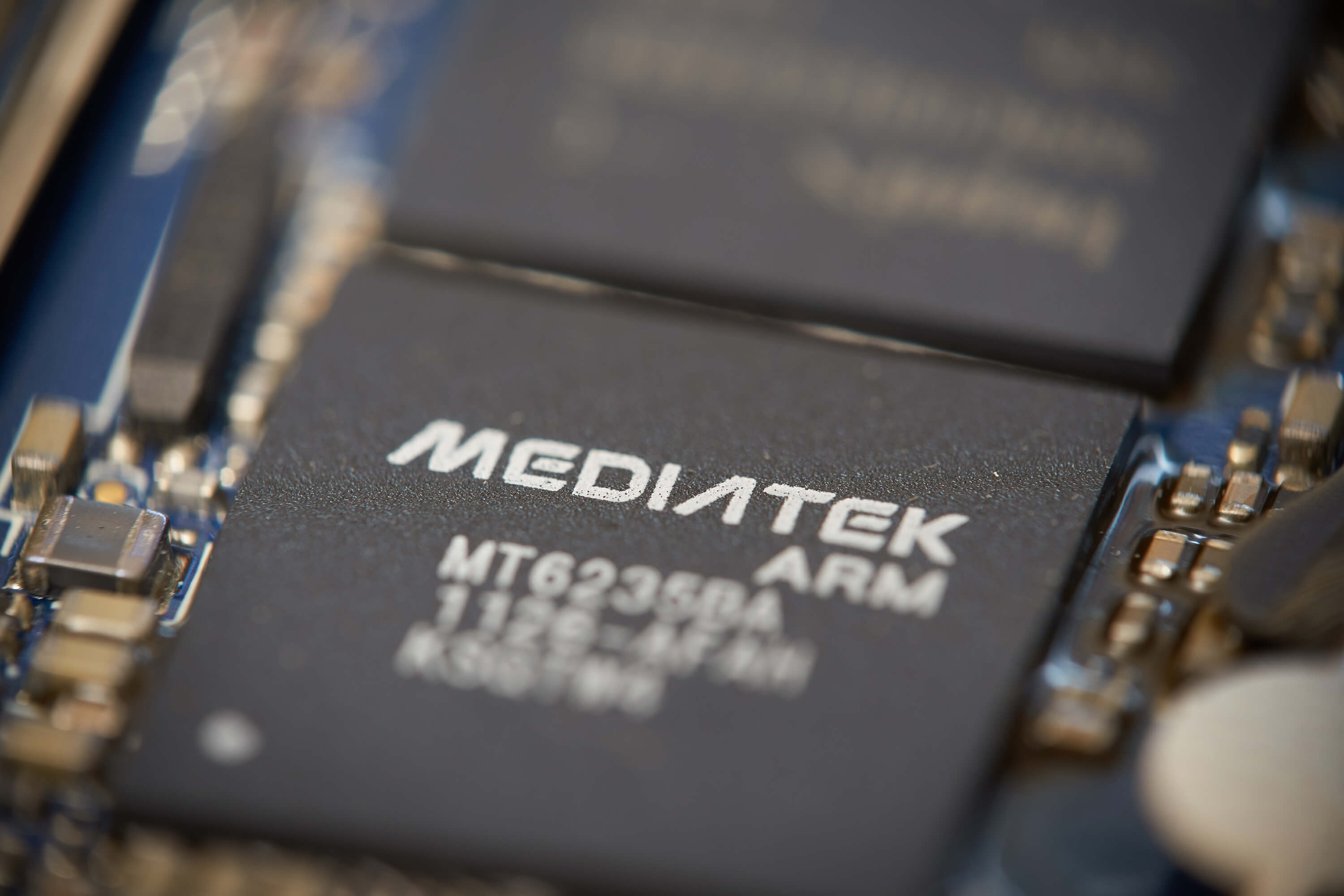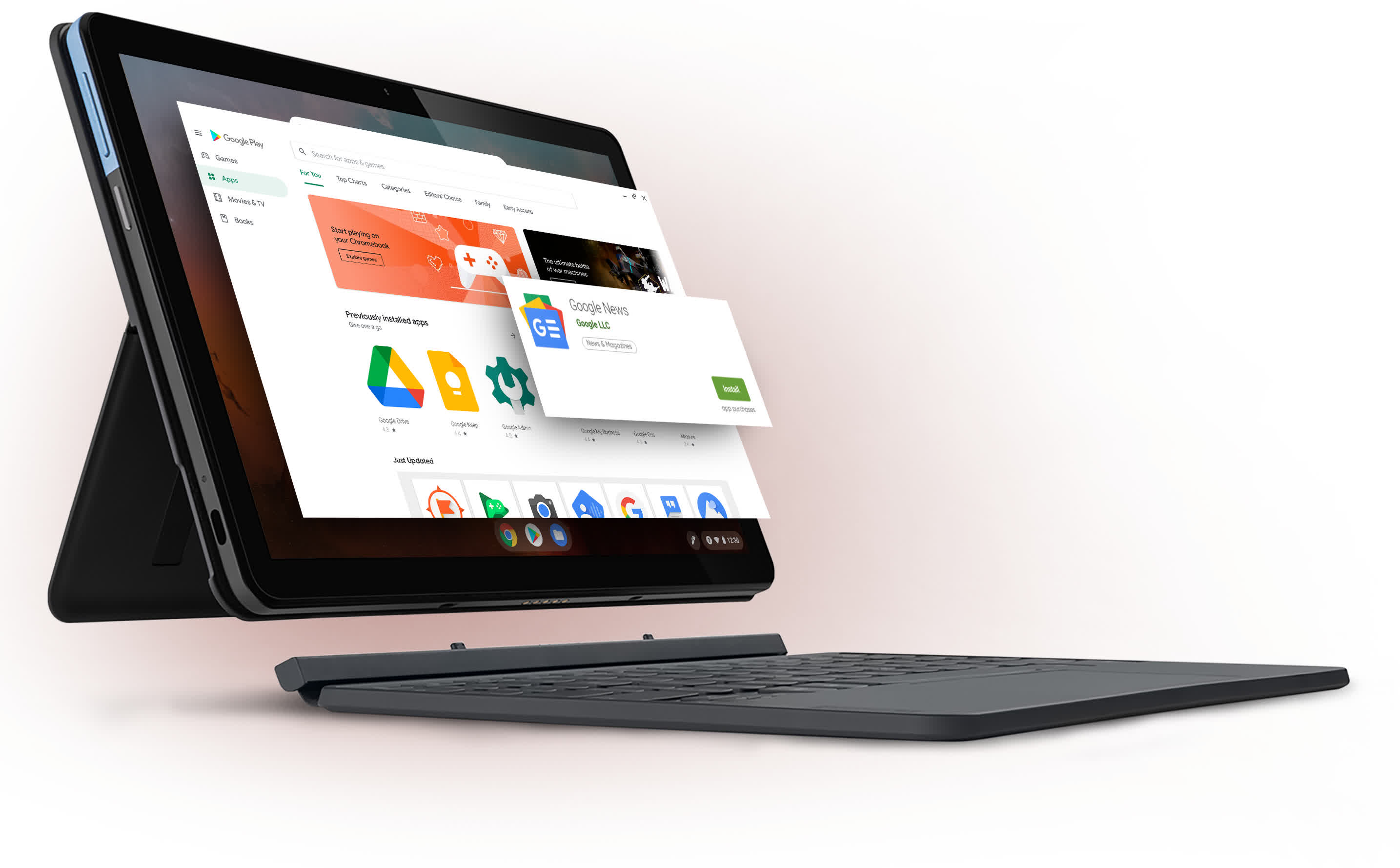The big picture: While it may not be the most familiar name to tech enthusiasts, Taiwan-based chip company MediaTek is a growing member of the global tech marketplace. The company currently powers a significant portion of the lower-cost Android-based smartphones in China and other developing markets around the world. It is also the primary provider for computing engines in smart TVs worldwide, and, starting next year, Intel’s official modem partner for 5G PCs.

This week MediaTek is holding its annual Executive Summit event (virtually, of course), and it is using the opportunity to introduce a number of additions to its Dimensity line of 5G-capable smartphone focused chips, as well as its MT8100 line of Arm-based SoCs designed for Chromebooks.
What’s interesting about MediaTek -- which some see as a lower-cost alternative to Qualcomm, particularly in the smartphone market -- is that it’s driving the adoption of critical new technologies, like 5G, by enabling much cheaper price points. In China, for example, there are MediaTek Dimensity 720-powered 5G phones at prices that translate to under $150 USD (the Realme Q2i, for example).
The company’s new Dimensity 700 chip, which is based on 7nm process technology, should theoretically lead to even lower price points for 5G phones and will show up in markets outside China, including India and potentially elsewhere. The bottom line is that the company is creating the opportunity to bring 5G to very consumer-friendly, mainstream price points -- and pushing Qualcomm to lower-cost 5G alternatives as well.
"As you might expect, you don’t get all the technologies in a much cheaper 5G smartphone that you do in a more expensive one, but the tradeoffs aren’t as bad as you might expect"
Of course, as you might expect, you don’t get all the technologies in a much cheaper 5G smartphone that you do in a more expensive one, but the tradeoffs aren’t as bad as you might expect. (And there’s even a feature that more expensive 5G phones -- including the iPhone 12 line -- don’t have, which I’ll explain in a moment.) Specifically, none of MediaTek’s current 5G modem offerings, including its upcoming modem module for PCs being developed in partnership with Intel -- support millimeter wave (mmWave) technology.
While this means you won’t have access to the fastest possible 5G speeds, given the extremely limited coverage and range of mmWave signals, it isn’t really a practical problem for the near future. Additionally, the lower-cost MediaTek modems don’t support MIMO technology, which theoretically lets smartphones create several simultaneous connections to a smartphone tower over a single frequency. However, there needs to be network support for that to work, and only a few carriers are starting to deploy 5G MIMO.
On the other hand, many of MediaTek’s 5G-based SoCs, including the new low-cost Dimensity 700, has a capability we won’t see in Qualcomm-based phones until the X60 modem comes out next year. That feature is the ability to do carrier aggregation (CA) on multiple types of 5G NR signals. CA allows you to combine the data from two different connections on two different frequencies into one “fatter” data pipe. It’s conceptually similar to MIMO, but instead, it uses different frequencies to make the two connections. A benefit of this approach is that it doesn’t require the specialized beamforming antennas on cell towers that MIMO does. Practically speaking, this 5G NR carrier aggregation technology means that on a network like T-Mobile’s, which uses both 600 MHz “low-band” 5G and 2.5 GHz “mid-band” 5G (in certain locations), a MediaTek Dimensity modem-equipped smartphone could reach real-world speeds of over 1 Gbps -- a feat that both companies recently demonstrated.
Another nice 5G feature in the MediaTek Dimensity line is support for Dual SIM. This could be important in situations in which a person needs to have one SIM connect to the public 5G network and another SIM connect to a company-based private 5G network. In addition, like conceptually similar features on the iPhone 12, MediaTek’s 5G UltraSave is a network detection and activity-based power saving technology that actively switches power usage and network speeds, depending on what you’re doing, in order to preserve battery life.
In addition to the 5G-focused capabilities, the Dimensity 700 features an octa-core CPU with two ARM Cortex A76-based big cores running at 2.2 GHz, a two-core Mali G57-based GPU, support for up to 90 Hz displays, AI-enhanced photography features that support up to 64 MP cameras, and an audio DSP that supports multiple voice assistants. Kind of crazy to see how far even low-end SoCs have come.

For the rapidly growing Chromebook market, MediaTek also announced two new Arm Cortex-based offerings: the 7nm-based MT8192 for mainstream devices and the 6nm-based MT8195, which is expected in premium devices later in 2021. Both devices feature four big ARM cores (Cortex A76-based in the MT8192 and Cortex A78-based in the MT8195) and four smaller cores based on the Cortex A55, as well as a five-core Mali-G57 GPU.
In order to support more advanced voice and video-based applications, such as noise reduction, live translation, background removal, etc., both chips also incorporate a MediaTek-designed APU (AI processing Unit) -- version 2 in the 8192 and version 3 in the 8195. By the way, both chips also support HDR image processing for high-quality still and video image recording and playback, as well as Dolby Vision and 7.1 surround sound.
Until recently, the MediaTek name has not been widely known, but given the types of impressive, low-cost offerings it debuted here, as well as its forthcoming work with Intel, MediaTek is likely to be a brand that tech enthusiasts are going to get to know.
Bob O’Donnell is the founder and chief analyst of TECHnalysis Research, LLC a technology consulting firm that provides strategic consulting and market research services to the technology industry and professional financial community. You can follow him on Twitter @bobodtech.
https://www.techspot.com/news/87540-mediatek-driving-new-low-cost-options-5g-chromebooks.html